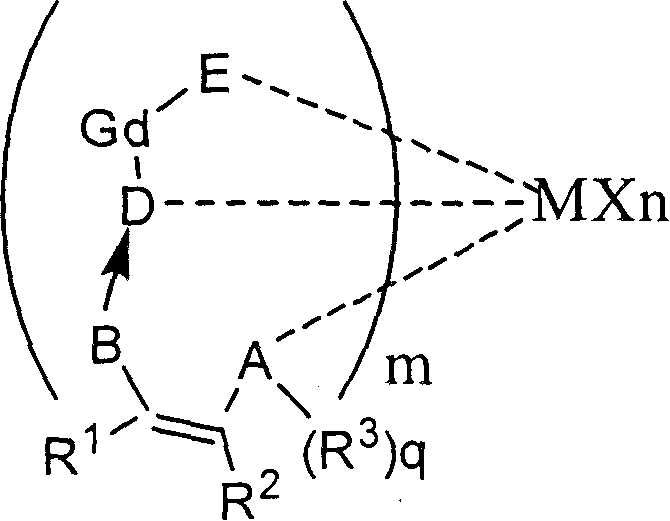Application of supported non-metallocene catalyst in ethene polymerization process by slurry method
A non-metallocene, ethylene polymerization technology, applied in the field of low-pressure slurry ethylene polymerization technology, can solve problems such as low catalytic activity, uneconomical application of supported catalysts, and reduced activity of catalytic olefin polymerization
- Summary
- Abstract
- Description
- Claims
- Application Information
AI Technical Summary
Problems solved by technology
Method used
Image
Examples
Embodiment 1
[0075] Preparation of supported non-metallocene catalysts
[0076] (1) Thermal activation treatment of silica gel
[0077] Take ES70 type silica gel (product of Ineos Company) and bake it under nitrogen atmosphere. The calcination conditions are: heating rate 5°C / Min, constant temperature at 200°C for 0.5h, constant temperature at 400°C for 0.5h, then constant temperature at 600°C for 4h, and finally natural cooling under nitrogen atmosphere. Recorded as ES70-650 carrier.
[0078] (2) Preparation of modified carrier
[0079] Take 10g ES70-650 carrier, add 200ml toluene, add 50ml TiCl under stirring 4 (5v / v%TiCl 4 Hexane solution), stirred and reacted at 20°C for 16 hours, filtered, washed with 150ml of toluene three times, dried and vacuum-dried.
[0080] (3) Preparation of composite carrier
[0081] Anhydrous magnesium chloride is obtained by calcining analytically pure magnesium chloride at 500°C for 3 hours in an air atmosphere. Under an anhydrous and oxygen-free nitro...
Embodiment 2
[0096] Basically the same as Example 1, but with the following changes:
[0097] In the preparation of the catalyst, the silica gel is ES70X, and the catalyst is recorded as CAT-2;
[0098] The slurry polymerization process using the above-mentioned supported non-metallocene catalyst is basically the same as that of Example 1, but the cocatalyst is ethyl aluminoxane (EAO).
Embodiment 3
[0100] Basically the same as Example 1, but with the following changes:
[0101] In the preparation of the catalyst, the silica gel is ES70Y, and the catalyst is recorded as CAT-3.
[0102] The cocatalyst is selected from isobutylaluminoxane (IBAO);
[0103] The solvent of the present embodiment is tetrahydrofuran;
[0104] Magnesium chloride was changed to magnesium ethoxide.
PUM
 Login to View More
Login to View More Abstract
Description
Claims
Application Information
 Login to View More
Login to View More - R&D
- Intellectual Property
- Life Sciences
- Materials
- Tech Scout
- Unparalleled Data Quality
- Higher Quality Content
- 60% Fewer Hallucinations
Browse by: Latest US Patents, China's latest patents, Technical Efficacy Thesaurus, Application Domain, Technology Topic, Popular Technical Reports.
© 2025 PatSnap. All rights reserved.Legal|Privacy policy|Modern Slavery Act Transparency Statement|Sitemap|About US| Contact US: help@patsnap.com



